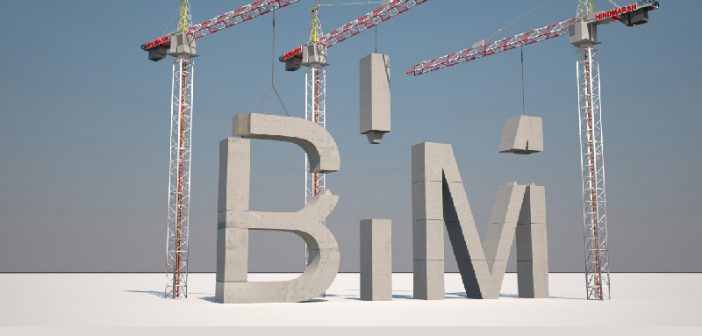Construction clients and building owners stand to gain the most benefit from BIM, but realising, or materialising, those benefits isn’t simple, and the uptake of BIM is still relatively low across the industry.
A report by the Boston Consulting Group in 2016, titled “The Transformative Power of BIM”, noted that full-scale digitalisation could lead to costs savings of 13-21% in design, engineering and construction phase, and 10-17% in the operations phase. Those are significant and compelling potential savings, but how do construction clients and building owners realize those benefits? To find out, BIMIreland.ie spoke to the managing partners of Ireland’s leading BIM consultancy practice, Ralph Montague and Patrick Slattery of ArcDox.
ArcDox have been enabling and supporting the use of BIM on projects in Ireland for the past 8 years, through consultancy, production training and support services, and have been involved in over 200 projects that have used elements of BIM. ArcDox have first-hand experience of what has worked well, and what hasn’t worked so well, and they offered the following advice, based on their experience.
Clients Must Drive BIM

Ralph Montague
The incentives for design and construction teams to drive productivity improvements and savings is very low. In fact, the income and profits of these companies is often higher if the building cost and delivery time is higher. Clients can’t expect the design team, or construction team, to drive productivity improvements and savings through the adoption of BIM, without having the right incentives in place. Only the client has the right incentive, and the authority, to properly drive BIM. However, it is unfortunate that most client organisations don’t have the knowledge and skills to properly ask for BIM, to defend or counter any reasons they are given not to use BIM, or to know that what they are receiving is a proper BIM service. This is where having the independent and impartial advice of a BIM consultant on the project, representing the clients’ interests, can really help.
Introduce BIM as Early as Possible
Design teams would prefer not to introduce BIM at the early stages of projects, because it forces them to think about, and resolve design issue much earlier. They would like to keep things “lose and woolly” while they explore options and get towards an agreed design, and leave the resolution of issues to much later in the process (even leave some to be resolved on site). However, if you introduce BIM at a later stage, there will be additional time and cost to convert all the information back to BIM. This is a wasteful duplication of effort and cost, and could delay the project. There is no reason why BIM cannot be used from the outset. In fact, exploring design options in BIM is much better – visualising, communicating and understanding those options is much easier in 3D BIM, even analysing and testing those options more thoroughly with 4D BIM (time or sequencing), 5D BIM (quantity extraction and cost control), 6D BIM (performance analysis) and 7D BIM (operations and lifecycle costs analysis). Clients must make it clear from the very outset of the project, that they want BIM to get a better process and avoid any wasteful duplication of effort and cost.
Follow an Industry Standard Process

Pat Slattery
There is a human tendency on construction projects to “make it up as you go along”, or invent bespoke ways of doing things on every project. This creates ambiguity and uncertainty, which leads to confusion, and a lot of additional effort and time (and cost) trying to understand what is required. Uncertainty leads to wasteful duplication of work, abortive work, misunderstandings, delays, variations, cost overruns, disputes and litigation – all of which adds no value to the project (and by definition it is waste). In fact, organisations like the Lean Construction Institute suggest that over 30% of the cost of construction is waste. A lot of organisations in design and construction have built business models on these wasteful practices, and have no reason to change. Only construction clients have the incentive, and the authority, to insist that a better, less wasteful, process is used. BS1192 is an industry code of practice for the collaborative production of architectural, engineering and construction information, and sets out a clear way to produce, manage and share digital information. PAS1192-2 is a specification for information management for the capital delivery phase of projects, which sets out a clear and transparent process, which aims to reduce ambiguity, uncertainty, and bring about improvements in productivity and savings. Clients must follow these standards, and also insist that their project teams work to these standards. Following standards means that there are efficiencies and consistency between projects, which save further time and money, and improve quality. Having a BIM consultant on the project, representing the clients’ interests, helping with some of the technical aspects of implementing these standards, and checking that these standards are being followed, can really help.
[rev_slider BluBeam]Lowest Price Doesn’t Always Win
When procuring design and construction services, it may seem like the obvious option is to go for the cheapest price, to reduce the overall cost to the project. But, it’s the cheapest price for a reason – they are going to try to do the least amount of work to get paid. Construction clients need to take a more holistic view for the project, if they are going to realize, or materialize, the benefits of BIM. A team that have the capability, skills and resources to work in BIM, and the willingness to collaborate with others, and follow industry standards is far more valuable to the client and the project than cheapest price. A quality assessment of the design and construction teams’ BIM capability should form part of the decision to appoint a team member, not just evaluating price alone.
Early Engagement of SpecialistsThere is a tendency to delay the engagement of specialist designers and contractors, to the very last minute. Again, it may seem like the obvious choice to not spend money until you have to. But, one of the benefits of BIM is that you can “build the building twice” – first in the virtual environment, where the design can be tested, analysed, and resolved, and where mistakes can be made that don’t involve real money, people, labour and materials. And then build physically on site – as the old saying goes “..measure twice, cut once..”. Of course, this means that the specialists have to be engaged far earlier, to build the “virtual building” in BIM, or contribute their input earlier. Late engagement of specialists and contractors with the knowledge of how things will be constructed, leads to abortive re-work or duplication of effort, and clients end up paying for information two or three times. It is important for clients to bring the right people into the process at the right time, to facilitate the “virtual building” before executing work on site, if the benefits of BIM are going to be realized.
BIM Does Not Cost More
Clients may feel that by requesting BIM, they are asking for something extra, and therefore it is going to cost more. This situation is not helped by the design and construction teams telling clients there will be additional charges for BIM (as if it is an optional extra). So, let’s be clear – BIM is a far more efficient way of producing and managing information. If it’s more efficient, how can it cost more? It only costs more if you introduce the requirement to use BIM at a late stage, when a lot of information has already been produced, which needs to be converted back to BIM at an additional cost. It is true however, that BIM may require some additional upfront work or effort to resolve and coordinate the design (work that would have traditionally been left to much later in the process), and earlier engagement of specialists. So, BIM might cost more in a particular stage of design, but overall it will save money. There are obviously some costs associated with implementing BIM, like an investment in training, hardware and software, but as studies (like the BCG study “The Transformative Power of BIM”) have shown, BIM can lead to cost savings, so overall it costs less. But it may require a client to change who they pay, and when they pay them in order to realize the cost savings.
Working with a BIM Consultant
Clients may question the need for another consultant on projects, and may simply expect the design and construction team to get on with BIM. But as noted above, the incentives for realizing the potential productivity gains and savings may not be there, and the authority to strictly enforce adherence to an industry standard process like PAS1192-2, may also not be there. The skill and knowledge to carry out the duties of the client, or employer, set out under PAS1192-2, or to check that the project team are delivering what is required, may not be available in the client organisation. The engagement of a BIM consultant, as an independent and impartial advisor, with the clients’ interests in mind, helps to overcome these issues, and working through these issues and processes on a project can be “educational” for the upskilling of client representatives, for future projects.




